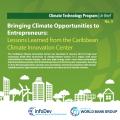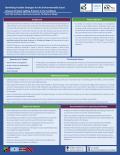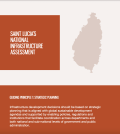
In 2017, overnight visitors to Saint Lucia totaled more than twice its resident population and, if cruise visitors are added, then the total number of tourists is almost six times that of year-round residents. Tourism brings economic development as well as cultural and social benefits, but its growth has also significantly increased greenhouse gas (GHG) emissions, pressure on energy and water resources, and the creation of waste. This poses a threat to the environment and to Saint Lucia as a viable and desirable tourism product.
This action plan is for policy makers, destination planners and managers, and private sector industry stakeholders. It explains how to make the accommodation value chain more sustainable, reducing the negative impacts of tourism, such as marine pollution and environmental degradation, and its high demands on natural resources. Taking action now will secure a better environmental, social and economic future for Saint Lucia. Tourism is crucial not only for Saint Lucia but for the entire Organisation of Eastern Caribbean States (OECS) region, therefore this action plan also provides top-level regional recommendations.
The Saint Lucian accommodation value chain has been carefully mapped and analysed, including all activities that happen within a hotel and those needed to supply them, such as electricity generation. Where there was a lack of data from within Saint Lucia, proxy data from similar Caribbean islands, such as Antigua, British Virgin Island and the Dominican Republic, has been used to complete the analysis.



